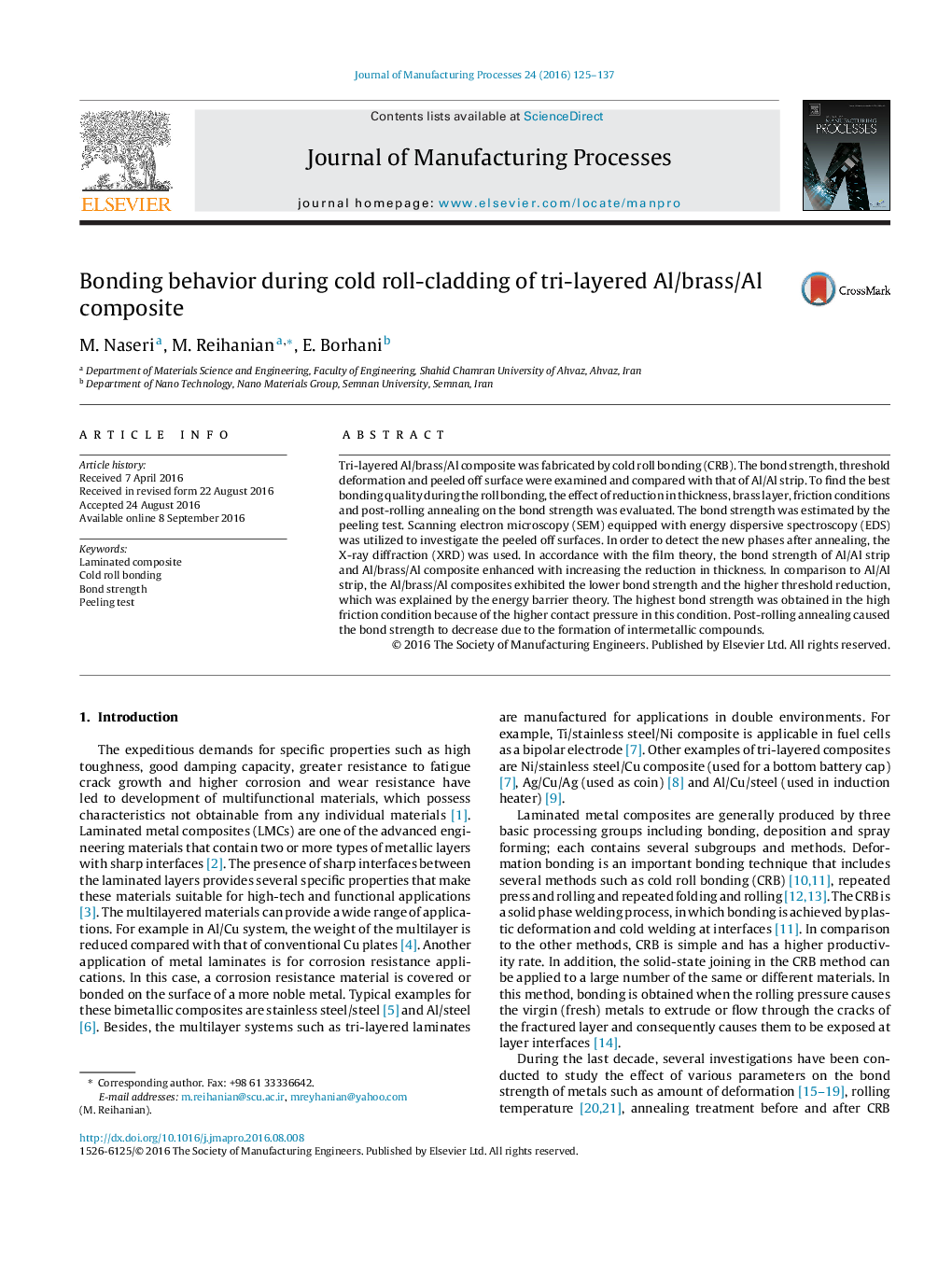| Article ID | Journal | Published Year | Pages | File Type |
|---|---|---|---|---|
| 6481503 | Journal of Manufacturing Processes | 2016 | 13 Pages |
Tri-layered Al/brass/Al composite was fabricated by cold roll bonding (CRB). The bond strength, threshold deformation and peeled off surface were examined and compared with that of Al/Al strip. To find the best bonding quality during the roll bonding, the effect of reduction in thickness, brass layer, friction conditions and post-rolling annealing on the bond strength was evaluated. The bond strength was estimated by the peeling test. Scanning electron microscopy (SEM) equipped with energy dispersive spectroscopy (EDS) was utilized to investigate the peeled off surfaces. In order to detect the new phases after annealing, the X-ray diffraction (XRD) was used. In accordance with the film theory, the bond strength of Al/Al strip and Al/brass/Al composite enhanced with increasing the reduction in thickness. In comparison to Al/Al strip, the Al/brass/Al composites exhibited the lower bond strength and the higher threshold reduction, which was explained by the energy barrier theory. The highest bond strength was obtained in the high friction condition because of the higher contact pressure in this condition. Post-rolling annealing caused the bond strength to decrease due to the formation of intermetallic compounds.
Graphical abstractDownload high-res image (132KB)Download full-size image
